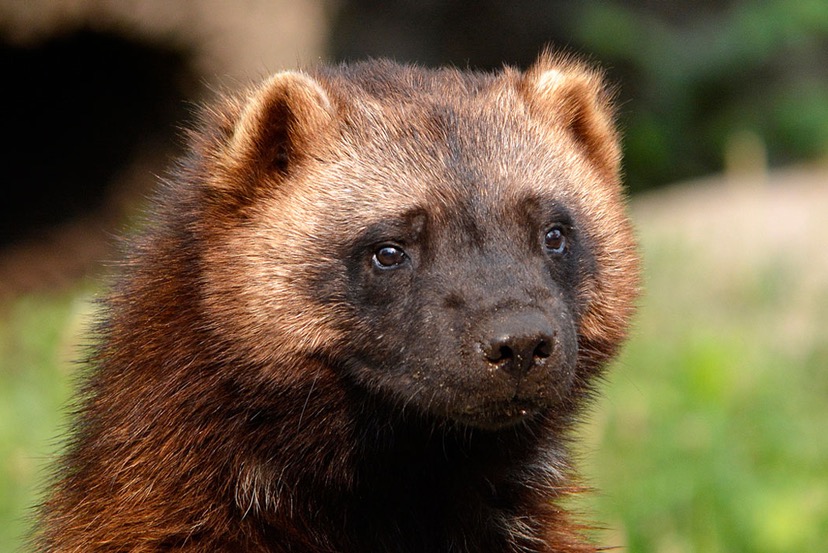Governor Jared Polis joined staff from Colorado Parks and Wildlife at Loveland Pass today to sign SB24-171, which gives CPW the authority to reintroduce the North American wolverine to Colorado.
Thanks to bill sponsors Senator Perry Will, Senator Dylan Roberts, Representative Barbara McLachlan, and Representative Tisha Mauro, SB24-171 contains key assurances for Colorado industries by requiring that wolverines in Colorado are designated as a nonessential experimental population [known as a 10(j) rule] before reintroduction begins.
This is now possible because the U.S. Fish and Wildlife Service listed the species as threatened under the Endangered Species Act in November 2023.
“I am thrilled to welcome Wolverines back to Colorado! A diverse and healthy environment strengthens Colorado’s booming eco-tourism and outdoor recreation sectors. Today, we begin to add Wolverines to the list of animals reintroduced to Colorado, ensuring Colorado remains the best state in the nation for ecodiversity and outdoor enthusiasts,” said Governor Polis.
“This legislation represents a significant commitment to restoring a native species back to Colorado’s landscape,” said Colorado Department of Natural Resources Executive Director Dan Gibbs. “Colorado has some of the best remaining unoccupied habitat for wolverines and we have the opportunity to bolster the population significantly with a science-based restoration.”
“Colorado’s high elevation habitats are expected to resist the effects of climate change as well or better than other parts of wolverine range, and play a critical role in the wolverine conservation story,” said CPW Director Jeff Davis. “I want to thank the CPW staff and partners that set the groundwork for these efforts. CPW will continue to work together with partners across the state on wolverine restoration.”
Key components of the new law
As long as the North American wolverine remains on the list of threatened or endangered species pursuant to the Endangered Species Act, CPW will not reintroduce the species in the state until the effective date of a final rule designating the wolverine in Colorado as a nonessential experimental population.
CPW will work cooperatively with federal land management agencies with jurisdiction over federal public lands where North American wolverines may be released in Colorado.
Although conflicts between wolverines and livestock are extremely rare, the legislation includes the provision that the Parks and Wildlife Commission will adopt rules providing for payment of fair compensation to owners of livestock for losses of livestock caused by the North American wolverine.
Before the reintroduction effort occurs, CPW will prepare and deliver a report on the North American wolverine in the state. CPW will also prepare a report for each of the five years after the reintroduction of the North American wolverine occurs. CPW must also develop a communications plan, which includes a description of how the division will communicate with stakeholders and boards of county commissioners in the locations of proposed releases, prior to reintroduction.
The bill authorizes the CPW Director to use $750,000 from the Species Conservation Trust Fund for the reintroduction effort. The funds would become available in the state fiscal year 2024-25.
Background on wolverines
With a solitary nature and a strong survival instinct, the wolverine is an icon of arctic, boreal, and alpine environments. The wolverine, (scientifically known as the Gulo gulo) is the largest terrestrial member of the weasel family, with adults typically weighing 15-40 lbs.
Wolverines are a native species to Colorado, and their range once spanned down the Sierra Nevada in California and the Rocky Mountains to Colorado, but the species was extirpated in Colorado in the early 1900s due to unregulated harvest, and broad-scale carnivore poisoning.
Wolverines, which number in the thousands in Canada and Alaska, have since reestablished populations in Washington, Montana, Idaho, and Wyoming, but have not returned to stay in Colorado.
It is estimated that there are fewer than 400 wolverines in the contiguous United States, and the most significant stressor on wolverines in the coming years will be climate change, according to an analysis by the U.S. Fish and Wildlife Service.
Climate change is likely to present new and growing challenges to the species, mostly in the form of a reduction in the cold, snowy habitat that wolverines prefer. Colorado’s high snowy mountains are the species’ largest unoccupied territory in the lower 48, and will only become more important as a warming climate shrinks the snowpack the wolverines need for dens.
Colorado’s mountains, which are at high elevation, are predicted to retain their snowpack as well, if not better than, the lower-elevation mountains in the Northern Rockies and Cascades.
CPW biologists estimate that the state may have enough suitable terrain to support approximately 100 – 180 animals at full carrying capacity, if wolverines in Colorado use the landscape similarly to the way they have in other northern states. If they do, this would significantly bolster the species’ long-term viability with a potential to increase the population in the Western U.S. by 20% or more.
Wolverines are primarily scavengers and opportunistic feeders that eat a variety of foods available in their harsh alpine/subalpine environment, with a large proportion of their diet being scavenged carrion. They will also prey on small rodents, rabbits, porcupines, ground squirrels, marmots, birds and eggs, fish, and plants. Wolverines will occasionally eat deer and other large ungulates.

